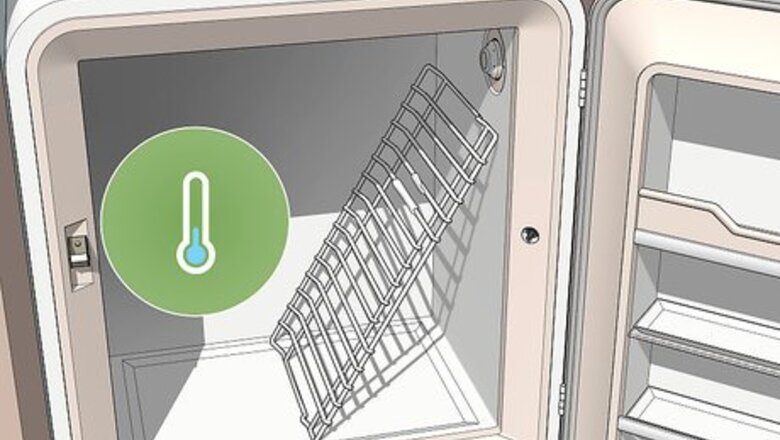
views
- Put the oven rack in the freezer for a few hours to harden the plastic. Then, scrape the brittle plastic off with a razor blade or scraping tool.
- Alternatively, turn your oven on the lowest heat setting. Wait a few minutes for the plastic to soften and scrape it off with a wooden spoon.
- To finish up, wipe your oven down with oven cleaner to remove any debris and plastic residue.
Cooling the Plastic
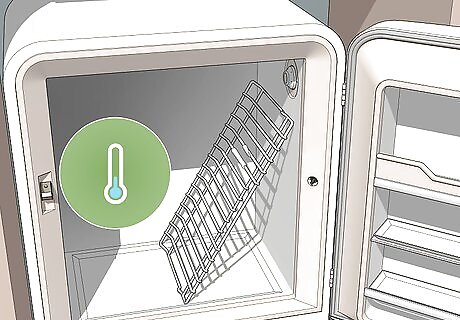
Remove the oven rack and put it into the freezer. You can leave it in there for a few hours to ensure that it is adequately cooled. This will make the hardened plastic more brittle and it will be easier to scrape off. Alternatively, you can fill a bag with ice to cool the plastic. This works for the rack, the coils, and the bottom of the oven. Leave the ice on the affected area for 15 to 30 minutes. EXPERT TIP Raymond Chiu Raymond Chiu House Cleaning Professional Raymond Chiu is the Director of Operations for MaidSailors.com, a residential and commercial cleaning service based in New York City that provides home and office cleaning services at affordable prices. He has a Bachelors in Business Administration and Management from Baruch College. Raymond Chiu Raymond Chiu House Cleaning Professional Letting the plastic cool can make it safer to clean. It's important to let melted plastic cool before you try to clean it, especially if it's been on the oven or stove top. This will reduce the chance that you'll burn yourself.
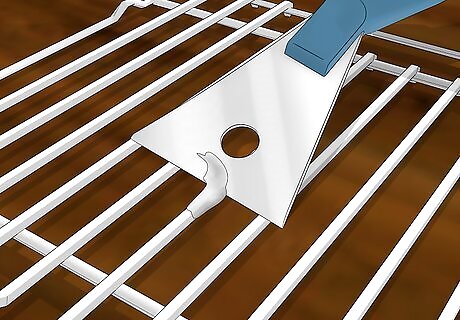
Scrape the brittle plastic. Once you remove the rack from the freezer or have cooled it thoroughly with the ice, you can begin to scrape the plastic. Using a razor blade or scraping tool, gently scrape at the melted plastic. You may have to apply some pressure to peel it away from the metal. Continue scraping until you have removed the plastic from the rack, coils, and bottom of the oven entirely. The plastic may be sharp, so take care to wear gloves and use caution to avoid cuts. EXPERT TIP Raymond Chiu Raymond Chiu House Cleaning Professional Raymond Chiu is the Director of Operations for MaidSailors.com, a residential and commercial cleaning service based in New York City that provides home and office cleaning services at affordable prices. He has a Bachelors in Business Administration and Management from Baruch College. Raymond Chiu Raymond Chiu House Cleaning Professional Use baking soda to make it easier to scrape off the plastic. First, use a wooden spatula or spoon to remove as much of the excess plastic as you can. Then, create a thick paste out of baking soda and warm water, and apply that to the plastic. Once you've done that, gently scrape away the paste and any remaining plastic.

Sweep the plastic remnants into the trash. You’ll be left with plastic shavings and pieces on the bottom of the oven. Carefully sweep these out using gloves or a brush. You may also choose to put a bowl or pot under the rack when scraping to catch the plastic as it falls.
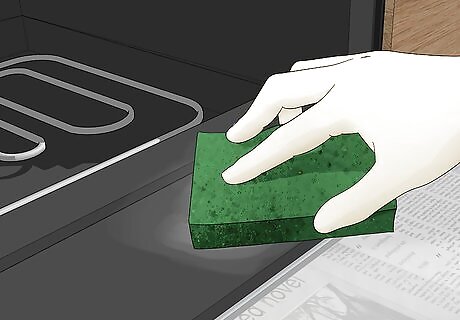
Clean the oven as usual. Before you use the oven again, be sure to wipe it with your usual oven cleaner to ensure the plastic residue is completely removed. Martha Stewart Martha Stewart, Homekeeping Expert When faced with the aftermath of melted plastic in the oven, resist the urge to immediately turn up the heat. Instead, arm yourself with patience and non-abrasive tools. Cool the oven fully, then gently pry away pliable plastic with wooden spoons or spatulas. For stubborn remnants, apply baking soda paste to lift residue before wiping clean with soft cloths and warm, soapy water. With care and elbow grease, order and cleanliness will emerge from the chaos.
Using Heat to Remove the Plastic
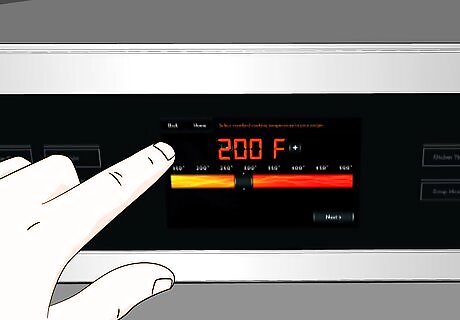
Heat your oven. Be sure to use the lowest setting, usually no hotter than 200 °F (93 °C). Stay nearby to turn it off before it starts to smoke. Plastic fumes are not only unpleasant, but they’re also toxic. Once you can smell the plastic melting, turn off the oven. Use a heating gun or hair dryer to heat the plastic. This is a great alternative to using the oven’s heating element. Warming the plastic directly with these tools may take longer but will make it easier to avoid burns or overheating.
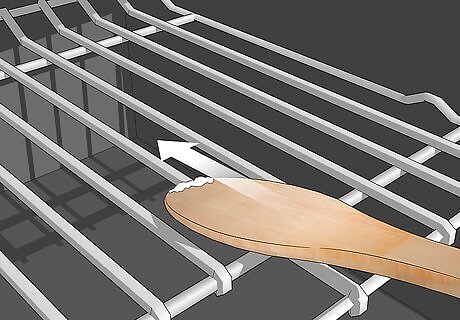
Scrape the warm plastic on the rack. Using a wooden spoon to scrape the now malleable plastic will avoid scratching the surface of the oven and racks. If the plastic hardens again as you're working, simply shut the oven and warm it again. To avoid burns, wear long sleeves and don gloves or oven mitts while you work. If possible, remove the rack entirely using oven mitts and scrape over your sink. Be sure to cover the drain to avoid plastic clogging your pipes and causing a whole new problem. If you cannot remove the rack, consider putting an oven-safe pot under the rack to catch the scrapings as you work.
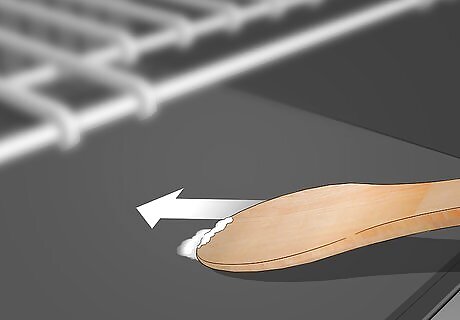
Remove the warm plastic from the heating element. Using the same process as above, scrape the warm plastic off the bottom of the oven and from the heating element. Be sure to use a scraper that will not melt while touching the warm coils, so avoid plastic or wood for this step. Instead, opt for a razor blade or scraping tool.

Remove the plastic scrapings. Ensure the oven and heating element are completely cool before you start this step. Use gloves or a brush to avoid cutting yourself on the potentially sharp plastic.
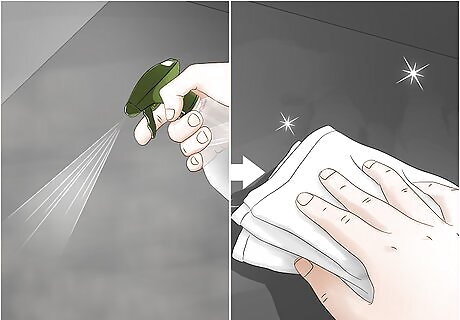
Wipe the oven clean. Using your regular oven cleaner, wipe out any of the remaining residue before using it to cook.

















Comments
0 comment